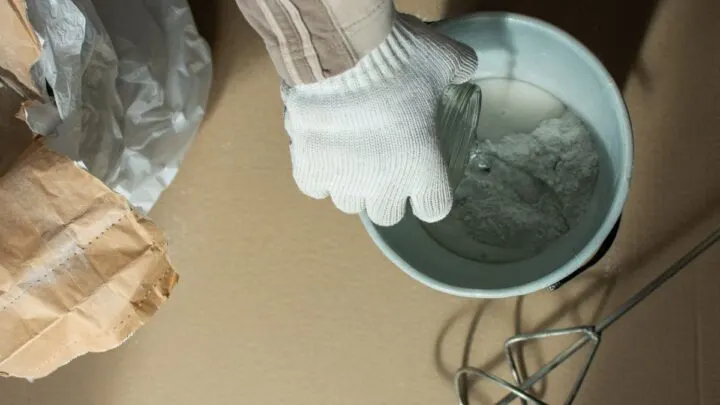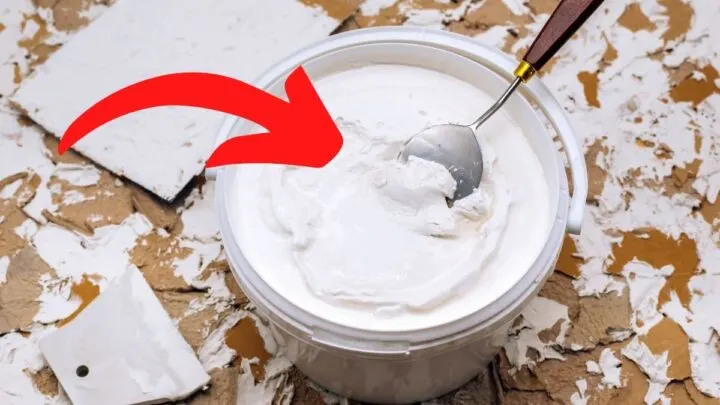If you need to take care of some plumbing repairs at home, plumber’s putty and silicone are going to be essential items to keep handy.
Whether it is a patch job or a leak, plumber’s putty and silicone can make all of the difference in needing to call a professional for assistance and taking care of the problem yourself.
However, understanding the appropriate situations that you need to use each one is going to be critical if you want to handle your plumbing repairs properly.
The main difference between plumber’s putty and silicone is that putty is a malleable product with a clay-like consistency used to waterproof fixtures, whereas silicone is a multi-purpose adhesive that can waterproof many different surfaces.
Doing plumbing around the house is never fun and a lot of the work is quite technical, which is why most people rely on professionals to do the job for them.
With that being said, there are a lot of basic plumbing issues that you will run into over the years that are incredibly easy to fix all on your own.
Plumber’s putty and silicone are one-stop-shop solutions to so many of your average household plumbing problems.
And by properly applying them, you can save yourself thousands of dollars in the long run.
Although both of these items can sometimes be used in similar situations, they have distinct differences and each one will be more suitable for specific kinds of repairs.
To help you understand this further, we are going to take a closer look at everything you need to know about plumber’s putty vs. silicone.

What is Plumber’s Putty?
Plumber’s putty is a malleable compound resembling clay and it is used to create a watertight barrier on pipes and drains.
When it comes to installing plumbing fixtures, putty is the going to be the most reliable product that you can use.
The material is very soft and you can turn it into virtually any shape by rolling it – making it very versatile and dynamic.
Plumber’s putty can be used in a number of different scenarios but this product tends to come in handy the most when working with:
- Faucets
- Showers
- Bathtubs
- Toilets
A key feature of plumber’s putty is that if you apply it properly, it will keep its form indefinitely without getting hard; the material stays firm and moist enabling the seal to hold for decades.
This not only gives the substance longevity and reliability, but it also makes it incredibly easy to remove if needed.
A lot of the products that are used with plumbing tend to be either permanent or very challenging to remove.
What makes plumber’s putty such a useful material is that it is as simple to remove as it is to put in place.
Given that the material does not harden even after decades of use, you can dig out the product with a pointed object or even your fingers.
Whether it is a long-term or temporary plumbing solution, putty is a hands-on product for homeowners and industry professionals.
Application
One of the best things about plumber’s putty is how easy it is to use.
You do not need to be an experienced plumber to use this product, as it is essentially the same as using Play-Doh.
All you need to do is take a small bunch of the substance and roll it into a rope-like shape.
You want to roll the plumber’s putty into a long enough shape to fit the area that you are trying to seal.
Once you have got the putty rope long enough, you can place it over the area that you are targeting and then lightly compress it to create a seal around the fixture.
If you happen to take out more plumber’s putty than needed, no problem – simply place what you do not need back in the container for the next time that you need to use the product.
As you compress your plumber’s putty, you want to make an ideal shape that will not break or crack. To do this, add just the right amount of pressure to fit the fixture.
The idea is to keep the seal waterproof, which is why over-compressing tends to result in leaks.
All in all, plumber’s putty is incredibly easy to apply and anyone can use it, regardless of plumbing experience.
If you make a mistake, you can remedy the situation immediately, as plumber’s putty is not permanent.
With that being said, despite its practicality and ease of use, properly applying the product will still give you decades of waterproof protection.
However, keep in mind, plumber’s putty is a product that you can only use in non-exposed areas.
It will not stick to surfaces and you cannot use it to patch up pipes, cracks, joints, or large areas.
What is Silicone?
Silicone is a rubbery adhesive material that is used to create more permanent seals compared to plumber’s putty.
It is very adaptable and is especially useful when needing to create seals that will undergo temperature changes.
Plumbers use silicone to seal fixtures in a similar way that they may use plumber’s putty – only this product will create a permanent bond.
This makes silicone a very reliable long-term solution for a lot of plumbing repairs but it also implies that it is less versatile, in case it ever needs to be removed.
Unlike plumber’s putty, silicone cannot be re-used – requiring you to manually scrape off the product and re-seal the area with a fresh layer of silicone.
The removal process is not all that difficult but it can be a bit tedious, as you need to scrape the rubbery substance from the surface with an edged item such as a cardboard cutter.
In addition to being used by plumbers, silicone is used in a wide variety of different situations and industries such as on boats and other watercrafts. Here are some sample situations in which silicone is useful:
- Plumbing
- Woodworking
- Watercraft
- Ceramics
- Floors
- Ceilings
Despite its lack of malleability, silicone is a more versatile product given that it can provide a bond in a wide variety of different situations, blocking water, dirt, and air from breaching its seal.
Application
Silicone is applied by injecting the material through a caulk gun onto a surface.
Once you have identified an area that you want to seal, you can inject the silicone in a thin line.
This will create a waterproof barrier that will stop fluids and other debris from passing the material.
If you want to get an optimum and long-lasting hold, it would be wise to first clean the area that you want to seal with silicone.
After you have created a silicone barrier, you should wipe off any of the excess material to keep a nice aesthetic on the surface area.
The silicone will then need some time to harden before it has a reliable hold, which will normally take around 24 hours. If applied properly, silicone can hold for upwards of 20 years.
You can apply silicone onto so many different kinds of materials and you can even use it to seal cracks.
In addition, you can lay silicone onto large surface areas – enabling you to have much more range of use compared to plumber’s putty.
These factors make silicone a more adaptable material that can be used in situations where putty would be inferior.
However, unlike plumber’s putty, you want to apply silicone with more care and consideration, as it is intended to be used as a permanent solution.
Silicone can be a bit tricky to get off given that you need to scrape the product off.
With that being said, you should also note that it can often leave a stain once scraped off, so choose your surfaces carefully.
Characteristics of Plumber’s Putty vs Silicone
Both of these products are incredibly useful and they can often be implemented interchangeably.
However, each material is distinct and has its own specific characteristics that can make it considerably more effective and reliable under the right circumstances.
In order to understand when to use plumber’s putty or silicone, we need to examine the characteristics of these products in more detail.
Flexibility
If you are looking for flexibility, plumber’s putty is going to be the way to go.
You may not have as strong of a bond compared to silicone, but you will have the ability to remove the putty with ease.
Instead of relying on an adhesive substance to create a waterproof seal, you have a malleable dough-like material that can be removed or replaced whenever needed.
You can do this all by hand without even needing to rely on any tools for the work.
Longevity & Durability
If you want a product that is going to give you longevity, plumber’s putty will last considerably longer than silicone.
Plumber’s putty is known to last as long as 35 to 50 years before becoming ineffective, whereas silicone typically starts to lose its bond after just 20 years.
If applied properly, plumber’s putty will also be more durable than silicone.
This is particularly the case for preventing leaks, as silicone will start to crack and break much sooner.
However, for certain conditions silicone is going to work better, as it is an adhesive substance that behaves a lot like glue.
One example of this would be sun exposure. Silicone has considerably better durability when used in direct sunlight, with UV rays having minimal impact on its longevity and water resistance.
Plumber’s putty will quickly lose its hold and start to dry out in these conditions.
Cost
If you are still on the fence about whether to use plumber’s putty or silicone for your next repair job, dollar value may just be the factor that ends up convincing you.
Plumber’s putty is a bit cheaper than silicone, as you can buy a 14 oz tub for as little as $7.50.
The ease of use of this product combined with its longevity and affordable price make plumber’s putty the best value option.
If you are targeting standard plumbing repairs for sealing fixtures, putty is the superior product of the two.
However, if you are looking for a more versatile material that you can use as an adhesive, then silicone is going to be the better choice.
Although silicone is a bit more expensive than plumber’s putty, it is still quite affordable at $10.35 for a 9.8 oz tube.
Summing Up Silicone vs. Plumber’s Putty
Knowing the difference between silicone and plumber’s putty can drastically help if you’re looking to do some DIY projects at home. These are used by professionals, but by knowing the difference yourself, you can hopefully save some money and know what you need to use for your project.
Make sure you do your research before using one over the other, and good luck with your projects!


